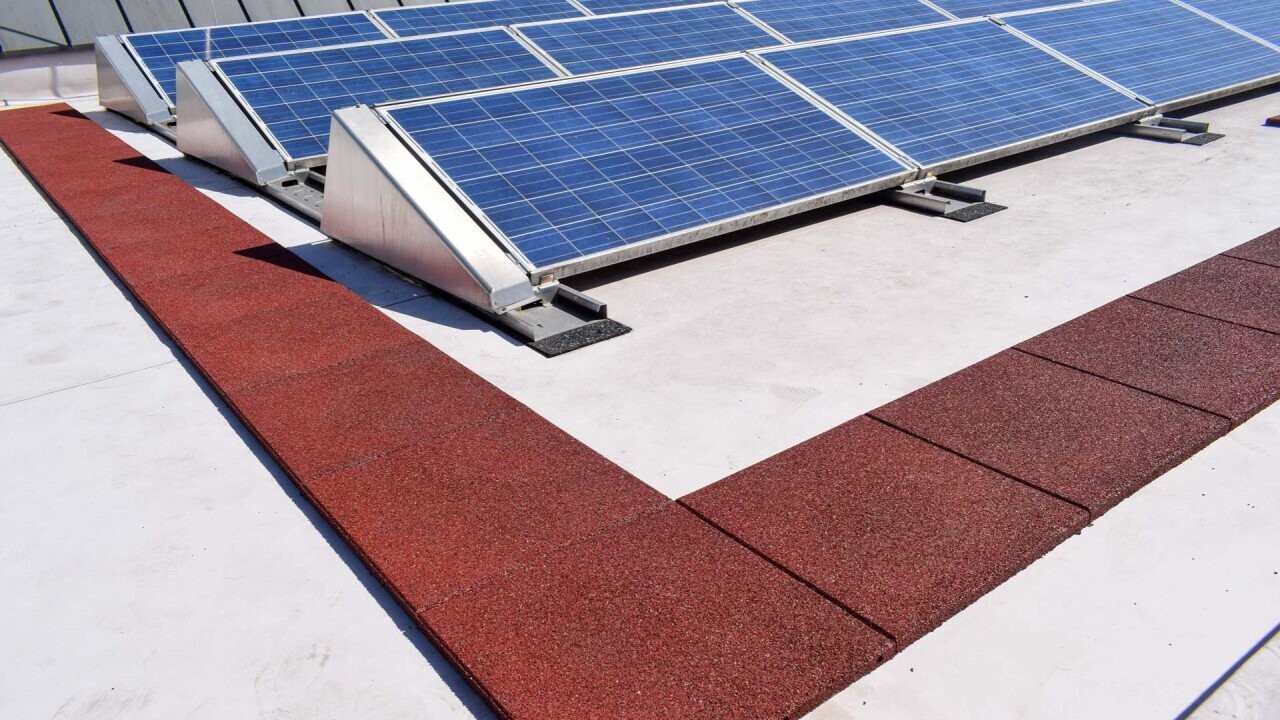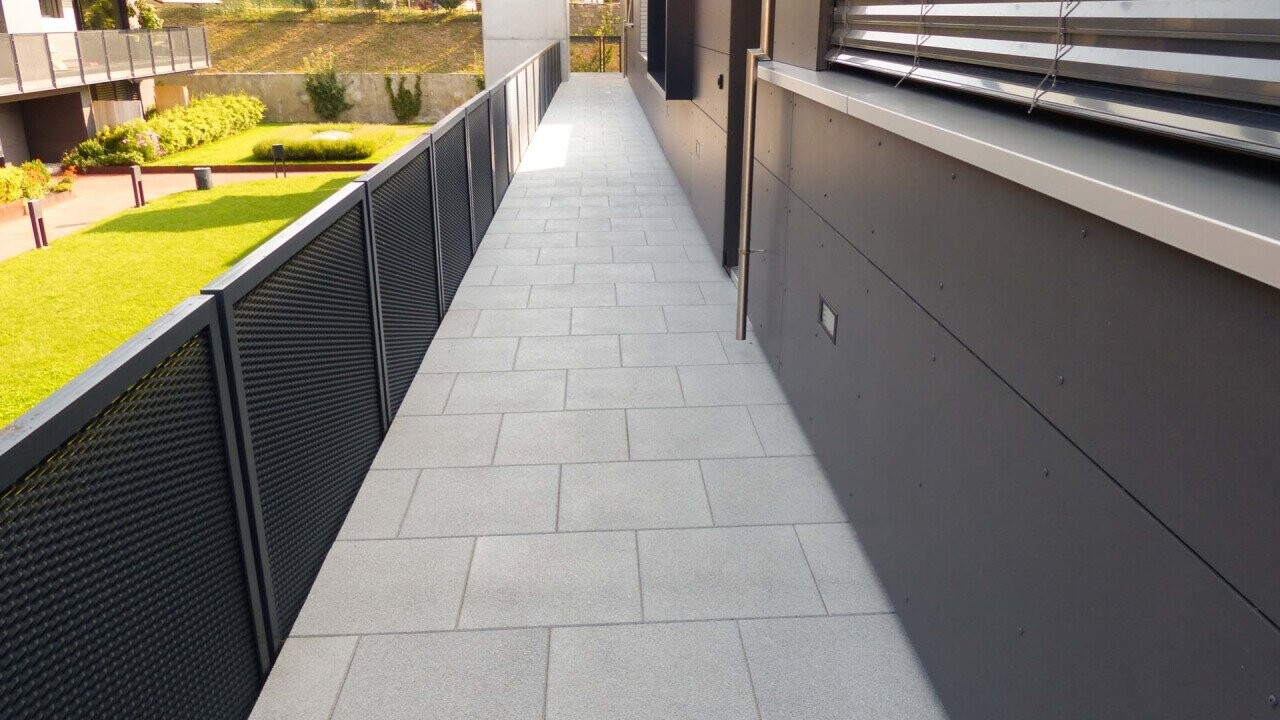Concrete slabs continue to dominate as the floor covering for maintenance paths on flat roofs. However, there are alternatives that are superior to conventional concrete slabs in many respects.
The most important factor - in the truest sense of the word - is that KRAITEC® step has a weight per unit area of just 20.8 kg/m², whereas most concrete slabs weigh around 112 kg/m². This is directly linked to easier and faster transport onto the flat roof. Lifting platforms have a weight limit, which is why several passes are necessary during transport. Installation is also easier on the body and faster, as several panels can be carried at once.
The sustainability factor is also extremely relevant. KRAITEC® step slabs are made from 100% recycled rubber granulate, whereas concrete slabs are almost always made from primary material. This results in a better CO2 balance than concrete slabs. The environmental compatibility of products already plays an important role in the selection of construction projects and will become even more important in the future.
While concrete slabs require a separating layer during installation, step can be laid directly on the waterproofing layer. A clear time and therefore cost saving.
The elasticity of the step slab makes it much more pleasant to walk on than concrete slabs, and it is also less susceptible to breakage, for example when heavy objects are dropped.
A simple cutter knife or jigsaw is sufficient for cutting KRAITEC® step slabs, whereas a cut-off grinder or stone cutting machine is required for cutting concrete slabs. Hardly any dirt is produced when cutting the rubber sheet, whereas the fine dust from the concrete slab is spread all over the flat roof.
Depending on the structure of the substrate, KRAITEC® step tiles achieve an impact sound improvement ΔLw of up to 32 dB. This can be a great advantage, especially when working on the floor below the flat roof. Concrete slabs, on the other hand, hardly contribute to less vibration.
Finally, the drainage capacity is another major advantage of step tiles. Water can seep through the open granule structure and drain away due to the 3D structure of the underside. Water builds up on concrete slabs, making them more prone to slipping. This makes accidents at work more likely.

